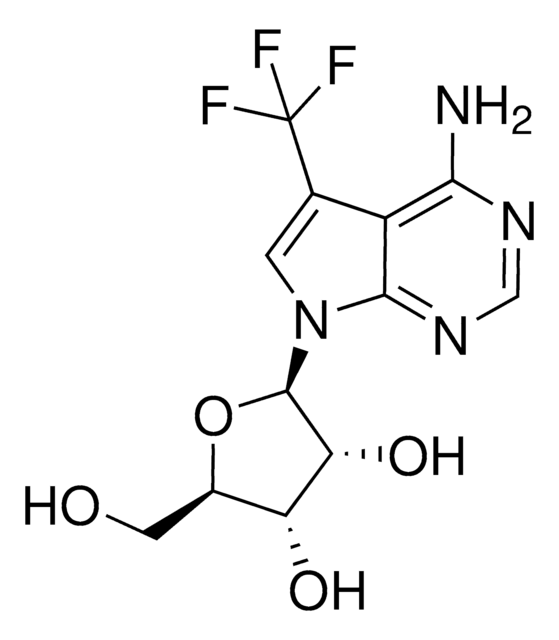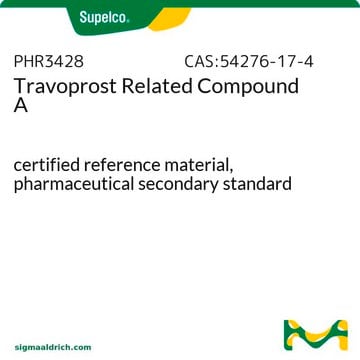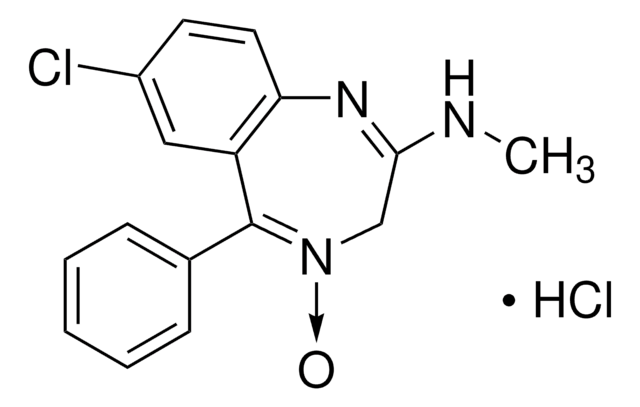SML3739
AZ Dyrk1B 33
≥98% (HPLC)
Synonym(s):
3-(2-Methyl-4-pyrimidinyl)-1-(phenylmethyl)-1H-pyrrolo[2,3-c]pyridine, AZ-Dyrk1B-33
Sign Into View Organizational & Contract Pricing
All Photos(2)
About This Item
Empirical Formula (Hill Notation):
C19H16N4
CAS Number:
Molecular Weight:
300.36
MDL number:
UNSPSC Code:
12352200
NACRES:
NA.77
Recommended Products
Quality Level
Assay
≥98% (HPLC)
form
powder
color
white to beige
solubility
DMSO: 2 mg/mL, clear
storage temp.
2-8°C
Biochem/physiol Actions
Potent and selective Dyrk1B kinase inhibitor that increased the number of incretin-expressing cells in diabetic mice.
AZ Dyrk1B 33 is a potent and selective Dyrk1B kinase (dual-specificity tyrosine phosphorylation-regulated kinase 1B) inhibitor. AZ Dyrk1B 33 potently increases the numbers of neurogenin 3-expressing enteroendocrine progenitors, Gip-expressing K-cells, and Glp-1-expressing L-cells in zebrafish and diabetic mice. It decreases glucose levels in both larval and juvenile zebrafish.
AZ Dyrk1B 33 is a potent and selective Dyrk1B kinase (dual-specificity tyrosine phosphorylation-regulated kinase 1B) inhibitor. AZ Dyrk1B 33 potently increases the numbers of neurogenin 3-expressing enteroendocrine progenitors, Gip-expressing K-cells, and Glp-1-expressing L-cells in zebrafish and diabetic mice. It decreases glucose levels in both larval and juvenile zebrafish.
Storage Class Code
11 - Combustible Solids
WGK
WGK 3
Flash Point(F)
Not applicable
Flash Point(C)
Not applicable
Certificates of Analysis (COA)
Search for Certificates of Analysis (COA) by entering the products Lot/Batch Number. Lot and Batch Numbers can be found on a product’s label following the words ‘Lot’ or ‘Batch’.
Already Own This Product?
Find documentation for the products that you have recently purchased in the Document Library.
Developing DYRK inhibitors derived from the meridianins as a means of increasing levels of NFAT in the nucleus
Bioorganic & Medicinal Chemistry Letters, 27(11), 2617-2621 (2017)
Discovery and optimization of a novel series of Dyrk1B kinase inhibitors to explore a MEK resistance hypothesis
Journal of medicinal chemistry, 58(6), 2834-2844 (2015)
Lianhe Chu et al.
Cell chemical biology, 29(9), 1368-1380 (2022-08-24)
Analogs of the incretin hormones Gip and Glp-1 are used to treat type 2 diabetes and obesity. Findings in experimental models suggest that manipulating several hormones simultaneously may be more effective. To identify small molecules that increase the number of
Our team of scientists has experience in all areas of research including Life Science, Material Science, Chemical Synthesis, Chromatography, Analytical and many others.
Contact Technical Service







